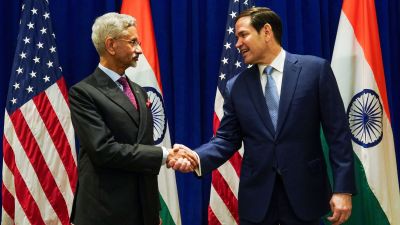Ritu Sarin is Executive Editor (News and Investigations) at The Indian Express group. Her areas of specialisation include internal security, money laundering and corruption. Sarin is one of India’s most renowned reporters and has a career in journalism of over four decades. She is a member of the International Consortium of Investigative Journalists (ICIJ) since 1999 and since early 2023, a member of its Board of Directors. She has also been a founder member of the ICIJ Network Committee (INC). She has, to begin with, alone, and later led teams which have worked on ICIJ’s Offshore Leaks, Swiss Leaks, the Pulitzer Prize winning Panama Papers, Paradise Papers, Implant Files, Fincen Files, Pandora Papers, the Uber Files and Deforestation Inc. She has conducted investigative journalism workshops and addressed investigative journalism conferences with a specialisation on collaborative journalism in several countries. ... Read More
Bilkis case: Forensic team can’t reach definite conclusion on skeletons
The six-member forensic team of the All India Institute of Medical Sciences (AIIMS) which worked for eight months on the skeletal remains of...

The six-member forensic team of the All India Institute of Medical Sciences (AIIMS) which worked for eight months on the skeletal remains of the relatives of the Gujarat riot survivor Bilkis Yaqoob Rasool could not draw any ‘‘specific conclusion except the gender of the bodies.’’
This is because the bones were in a highly decomposed state after two years and could not be matched with the bloodstain samples taken from the surviving relatives of Bilkis Rasool.
The report, submitted to the CBI a month ago, states, ‘‘No definite conclusion could be drawn except the gender of the unknown bodies… due to contamination or from degradation due to long period of burial or compound heterozygosity.’’
Those who buried the bodies had thrown in as much as 60 kg of salt in the grave. The AIIMS team has stated: ‘‘Salt being used to alter the rate of decomposition of the bodies cannot be ruled out.’’
Of the 14 missing relatives of Bilkis Rasool, post-mortems on seven bodies were conducted in Gujarat. The forensic team has concluded the ages and gender of those seven victims have matched. The bone samples recovered from Dahod’s riverine grave were reconstructed into five bodies, two were identified as male and three female. The unidentified bodies, the report states, belonged to victims of the 16-19 age group, the age of the fleeing victims, who were caught by a mob and killed.
Bilkis Rasool, who was then five months pregnant, too, was raped and assaulted, given up for dead, but survived.
The forensic report has since been sent by the CBI to the court in Mumbai where 20 persons are facing trial in the gangrape case.
The plight of Bilkis Rasool was first highlighted by The Indian Express. While the Gujarat police had closed the case, it was re-opened for investigation on orders of the Supreme Court.
As the DNA tests on the 108 bones and bone fragments and 18 pieces of clothing, recovered from Dahod on February 1 proceeded, special equipment was imported by the forensic team and British experts were consulted in one of the most challenging forensic tests ever undertaken in India.
Photos


- 01
- 02
- 03
- 04
- 05






























